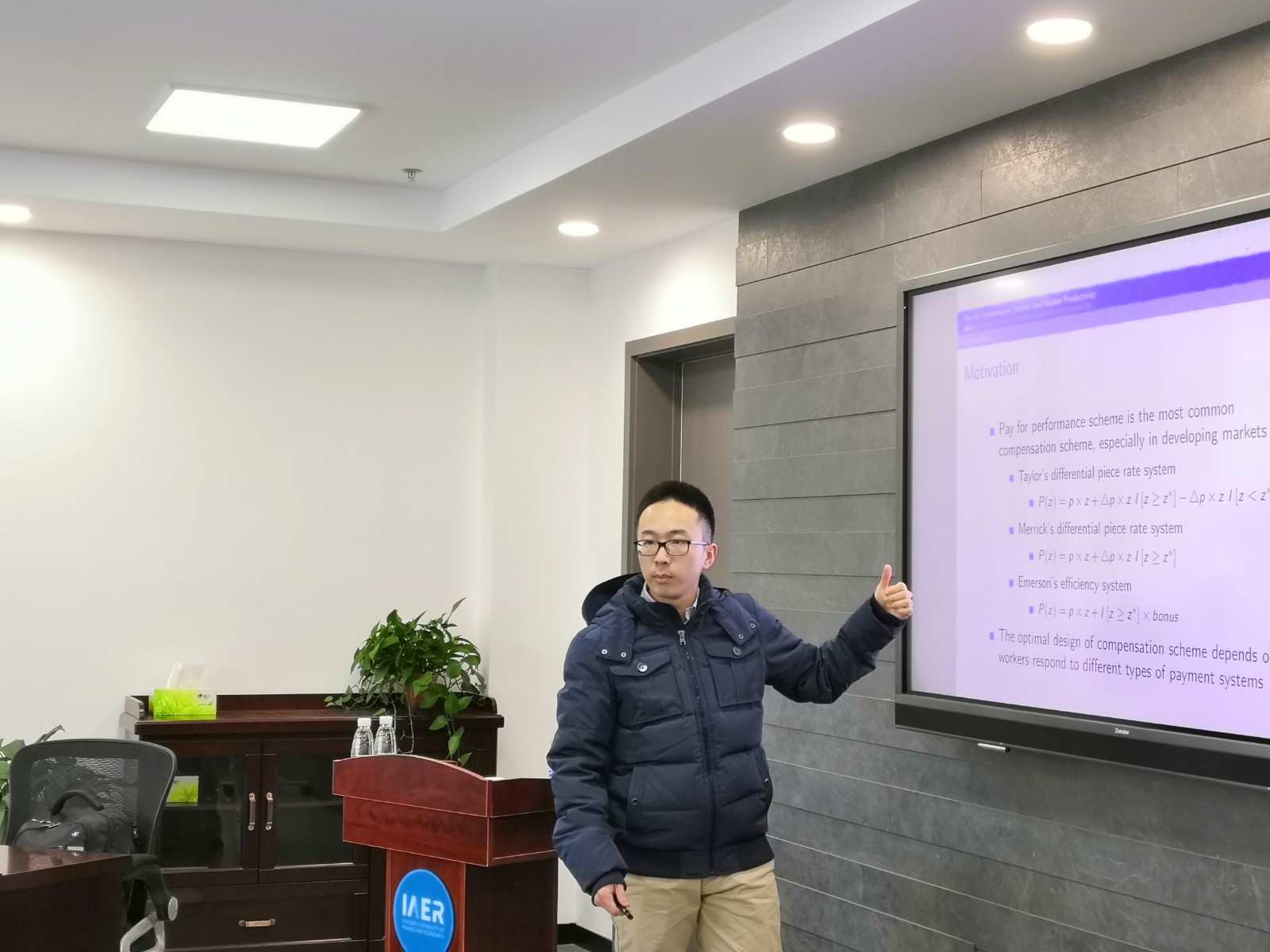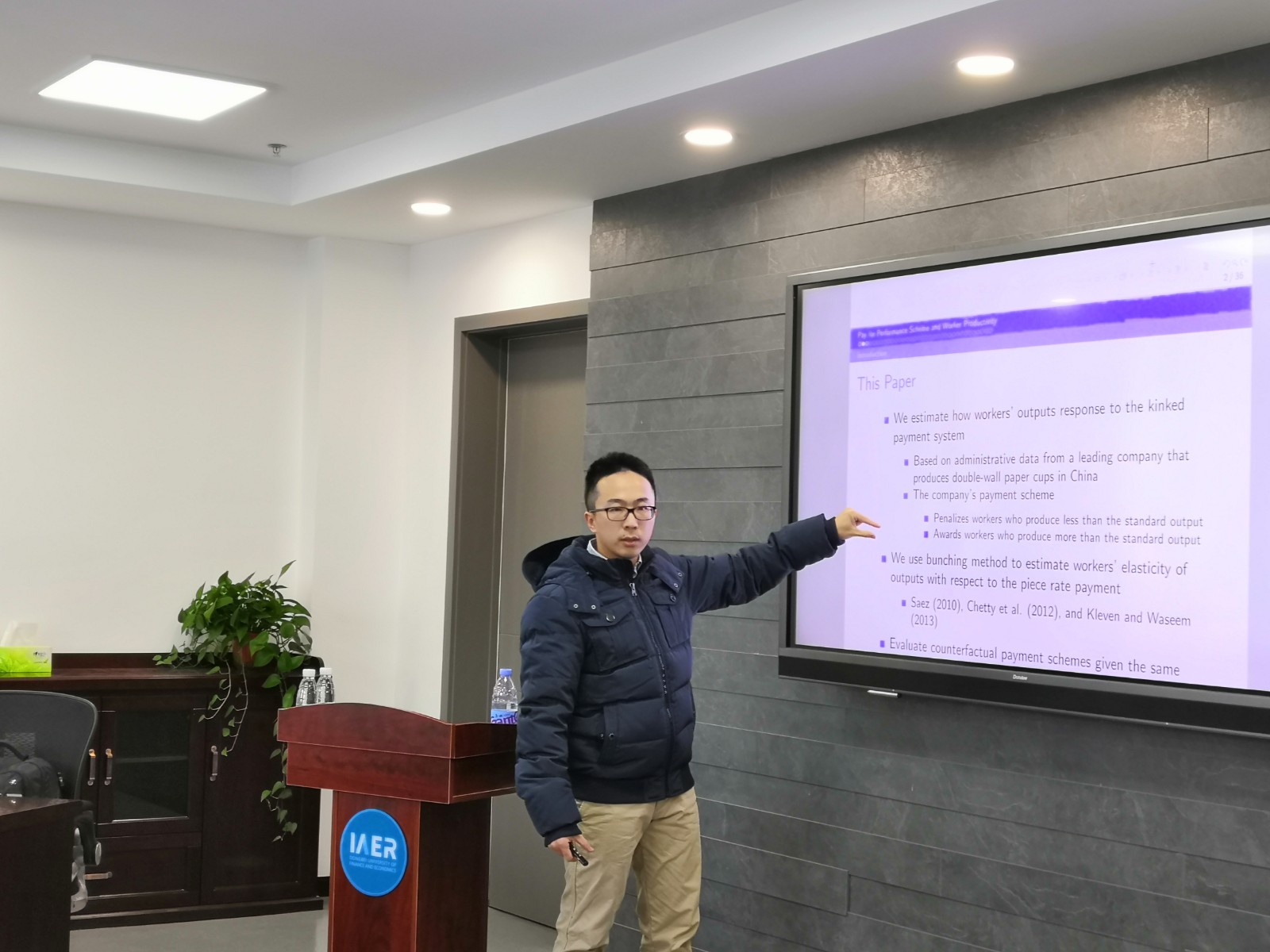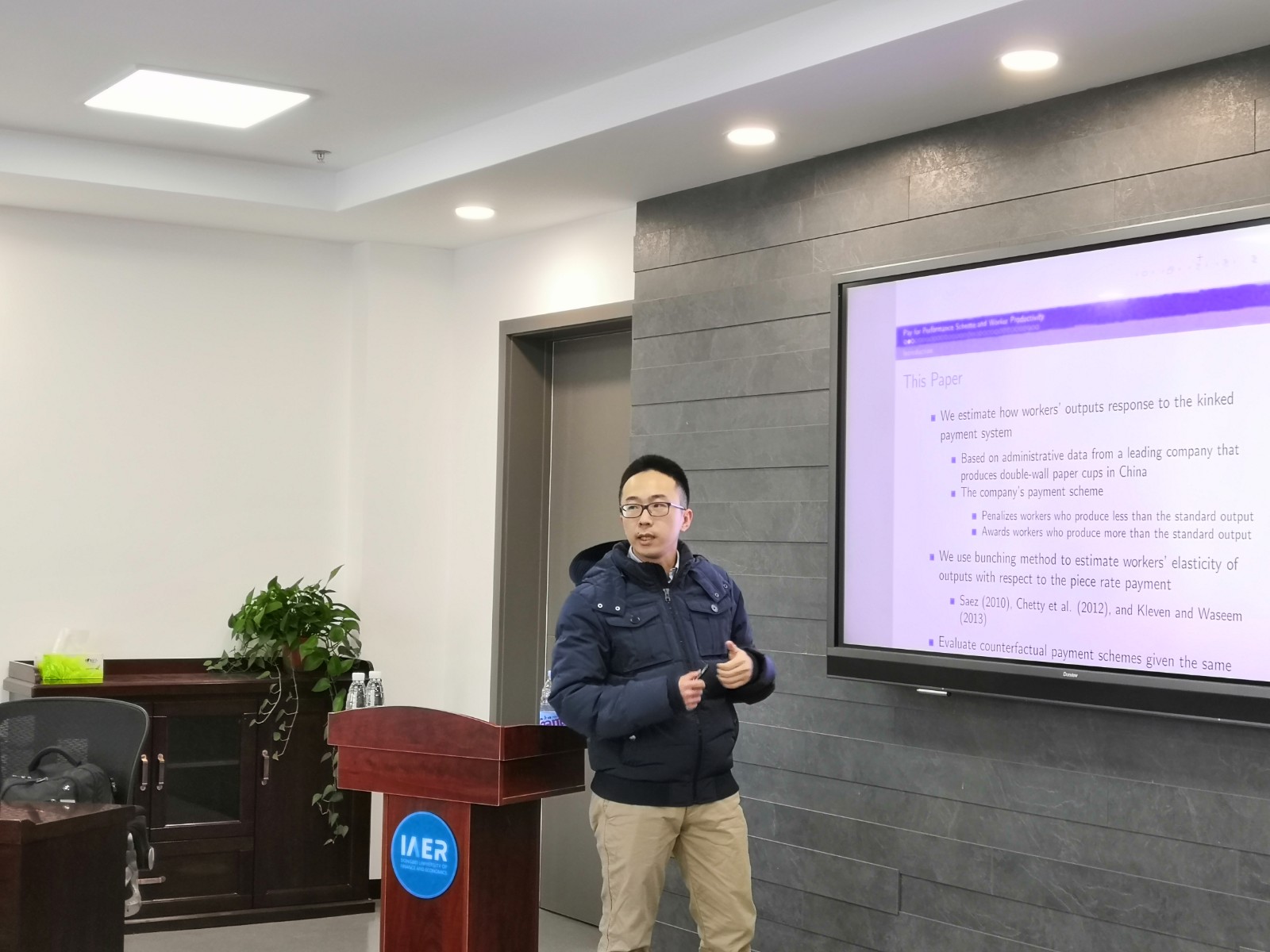Pay for Performance Scheme and Worker Productivity: Evidence from a Kinked Design in China
15:30-17:30, Friday, December 20, 2019
I-206, Boxue Building, DUFE
 Dr. Xiqian CAI is now an Associate Professor at Xiamen University. Dr. Cai obtained his Ph.D. in Economics from National University of Singapore. His research has focused on Behavioral Economics, Labor Economics, Experimental Economics, and Chinese Economy. His work has appeared in Review of Economics and Statistics, Management Science, Journal of Development Economics, Journal of Comparative Economics, The Journal of World Economy, among others.
Dr. Xiqian CAI is now an Associate Professor at Xiamen University. Dr. Cai obtained his Ph.D. in Economics from National University of Singapore. His research has focused on Behavioral Economics, Labor Economics, Experimental Economics, and Chinese Economy. His work has appeared in Review of Economics and Statistics, Management Science, Journal of Development Economics, Journal of Comparative Economics, The Journal of World Economy, among others.
This paper examines workers' response to a nonlinear payment system in a manufacturing firm in China. We use a dataset that records individual daily output and exploit a bunching method. We find clear graphical evidence that the distribution of workers' daily output clusters at the threshold of the payment scheme. Using a model with optimization frictions, we find that about 31% of workers make decisions with errors, and the structural elasticity of worker's output response with respect to the piece rate is 0.53. We find that the focal scheme generate 5% in output gains than the linear payment scheme. A further evaluation shows that with the total wage payment unchanged, the current kinked payment scheme, with both penalty and award plans, delivers the largest outputs than other several commonly used nonlinear incentive schemes. With the growing use of kinked payment schemes in the market, this paper contributes to the literature by providing novel evidence on workers' responses to kinked payment scheme in manufacturing firms, and sheds light on the design of compensation schemes.




